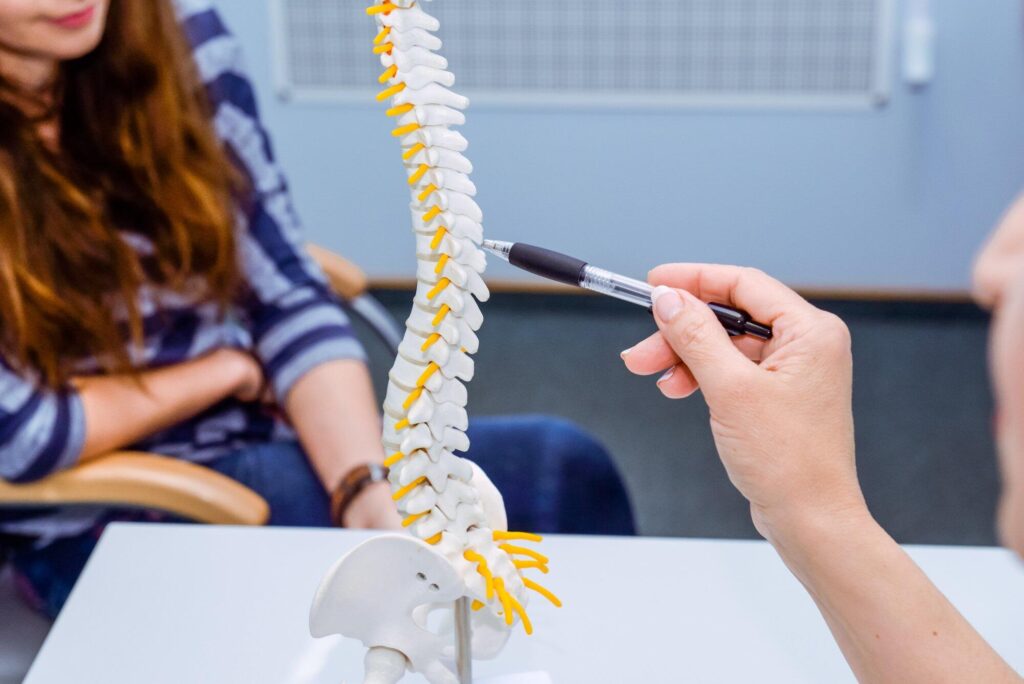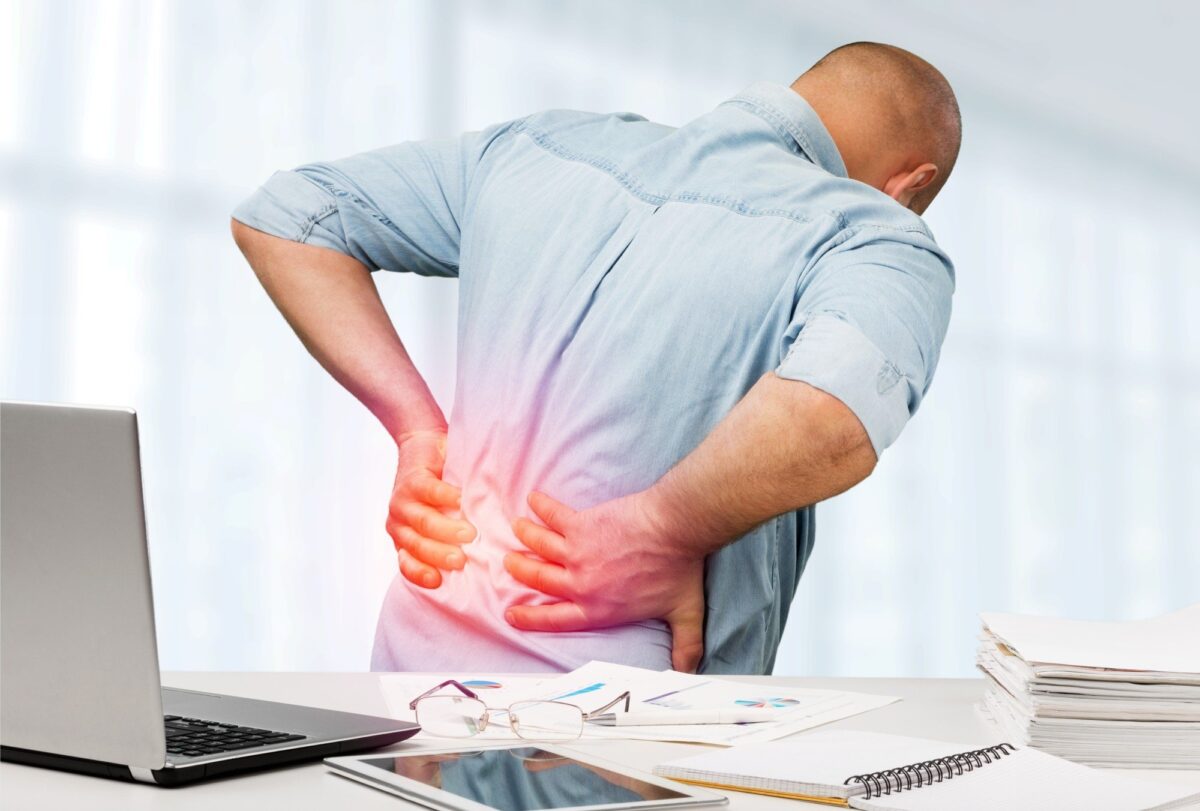Back pain is a widespread issue affecting people of all ages. According to the World Health Organization, approximately 1 in 13 individuals experience lower back pain. This statistic highlights how common and impactful back pain can be.
When back pain occurs alongside nausea, it can indicate various underlying medical conditions. Understanding the relationship between back pain and nausea is crucial for effective treatment and relief.
This guide explores the causes of nausea and back discomfort, possible health conditions that link the two symptoms, and effective back pain relief methods to manage symptoms. Keep reading to discover expert-backed insights and practical solutions that can help alleviate your discomfort and improve your quality of life.
The Link Between Back Pain and Nausea
Experiencing back pain and nausea simultaneously can be concerning. Several factors can contribute to this phenomenon.
Referred Pain
Some medical conditions cause pain in one body part that radiates to another. For instance, gastrointestinal issues may originate in the abdomen but cause pain in the back.
Autonomic Nervous System Activation
Severe back pain can stimulate the autonomic nervous system, triggering nausea. This response occurs because the nervous system controls involuntary bodily functions, including digestion and balance, which can be disrupted by intense pain.
Inflammation and Infection
Infections affecting internal organs or the spine can lead to nausea linked to back issues and systemic symptoms like fever. Conditions such as spinal infections or abscesses may trigger widespread inflammation, intensifying nausea and discomfort.
Common Causes of Back Pain and Nausea
Several conditions can cause nausea and back discomfort simultaneously. Here are some of the most common.
Gastrointestinal Issues
Gastrointestinal disorders commonly cause simultaneous back pain and nausea, as the digestive system and spine share nerve pathways. When the stomach or intestines are irritated, discomfort may extend to the back, causing significant pain.
Kidney Conditions
The kidneys are vital in filtering waste and excess bodily fluids, and any dysfunction can lead to significant discomfort. When the kidneys are affected by infections or stones, they can cause sharp or dull pain in the lower back and nausea.
Liver and Gallbladder Problems
The liver and gallbladder play key roles in digestion, and issues with these organs can cause significant pain and discomfort. Inflammation, infections, or blockages can lead to nausea and radiating pain in the upper back and abdomen.
Musculoskeletal Issues
Musculoskeletal problems are among the most common causes of back pain. This often leads to additional symptoms like nausea. Poor posture, muscle overuse, or underlying spinal conditions can contribute to chronic discomfort and imbalance in the body.
Pregnancy
Pregnancy places significant stress on the body, often leading to discomfort and pain in the lower back. Hormonal changes, weight gain, and shifts in posture contribute to these symptoms.
Infections and Autoimmune Disorders
Infections and autoimmune disorders can trigger widespread inflammation, leading to a combination of back pain and nausea. These conditions often affect multiple systems in the body, exacerbating discomfort and making diagnosis challenging.
Managing Back and Nausea Symptoms
Relieving back pain and nausea requires a comprehensive approach that targets the root cause of both symptoms. Here are some effective back pain relief methods.
Medical Evaluation
Consult with a chiropractor or physician. A healthcare provider can assess symptoms and recommend treatment or appropriate referral based on the underlying cause. Diagnostic tests such as X-rays, MRIs, or ultrasounds may be necessary to rule out severe conditions.
Home Remedies
Be sure to get plenty of rest and move gently. While rest is essential, excessive inactivity can lead to stiffness. Gentle stretching or walking may help ease discomfort.
Also, drink plenty of fluids to stay hydrated. This prevents dehydration, which is essential when experiencing nausea.
A slight diet adjustment may be necessary. Eating small, bland meals can reduce nausea and prevent stomach upset.
Medications
Non-prescription pain relievers such as acetaminophen or ibuprofen can help alleviate discomfort. Medications like ondansetron or dimenhydrinate can reduce nausea symptoms. Be sure to consult a professional before taking any medicines.
Chiropractic Care and Physical Therapy
Spinal adjustments are essential for overall health. Chiropractic treatments, such as those offered at Horine Chiropractic, can help address misalignments contributing to back pain.
Physical therapy can also alleviate pain. Strengthening the muscles around the spine can reduce pain and improve mobility.
Alternative Therapies
Massage therapy can relieve muscle tension and improve circulation. Some studies also suggest that acupuncture may help with nausea and back pain relief.
When to Seek Immediate Medical Attention
Some symptoms indicate a serious medical condition requiring urgent care. Seek immediate attention if you experience the following:
- Severe, persistent pain that does not improve with rest or medication
- High fever or chills, which may signal an infection
- Numbness or weakness in the limbs, indicating potential nerve damage
- Unexplained weight loss, which could point to an underlying illness
Preventing Back Pain and Nausea
Taking proactive steps can lower the likelihood of developing these symptoms. While some causes of back pain and nausea are unavoidable, adopting preventive measures can reduce risk:
- Maintain a healthy diet: Eating balanced meals supports digestion and reduces the likelihood of gastrointestinal issues
- Exercise regularly: Strengthening the core and back muscles improves posture and reduces strain
- Use proper lifting techniques: Correctly lifting objects can prevent muscle injuries
- Stay hydrated: Proper hydration supports kidney function and reduces cramping
Seeking Relief From Back Pain and Nausea
Understanding the connection between back pain and nausea is essential for effective management. Identifying underlying causes and implementing targeted treatments can significantly improve quality of life. If you’re struggling with persistent or severe symptoms, professional care can help.
Horine Chiropractic offers specialized treatments for back pain relief, focusing on non-invasive, drug-free solutions tailored to each patient’s needs. With a patient-first approach and years of expertise, our team is dedicated to restoring comfort and mobility.
Don’t let back pain and nausea disrupt your life. Schedule an appointment with Horine Chiropractic today and take the first step toward lasting relief.








 3. Shoulder or Upper Back Pain
3. Shoulder or Upper Back Pain 6. Poor Posture
6. Poor Posture
 What is a Keto Diet?
What is a Keto Diet?


